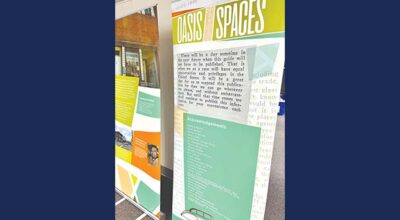BY THE RULES: Environmental agency accused of rewriting rules ‘behind closed doors’
Published 6:00 pm Saturday, August 23, 2014
An unorthodox rewrite of some of North Carolina’s environmental rules has the Pamlico-Tar riverkeeper speaking out against the North Carolina Department of Environment and Natural Resources.
This week, the Pamlico-Tar River Foundation and the Sierra Club of North Carolina submitted a letter to North Carolina’s Environmental Management Commission asking the commission to investigate the submission of 10 letters that halted the adoption of one set of rules and the “subsequent substitution of a new set of rules developed without public notice or public participation.”
“Fundamentally, there are two aspects of the story: one, the changes that were made and two, how they were made,” said Heather Jacobs Deck, Pamlico-Tar riverkeeper.
The rules involve riparian buffer mitigation — the act of restoring buffers around North Carolina bodies of water in one area when land development requires that buffers be destroyed in another. The natural fauna abutting bodies of water and extending up to 75 feet away works to keep harmful nutrients from entering the water. When a buffer is destroyed, water quality can be harmed — the rules govern what must be done to offset any potential harm.
Traditionally, this is the domain of the Environmental Management Commission. When the EMC adopted a set of buffer mitigation rules in May of 2013 — consolidated to apply to all river basins — it was several years of work and ongoing public input that created those rules. Their implementation, however, was derailed when the rules review commission received 10 letters of objection. According to North Carolina state law, 10 letters from the public is all that’s needed to put a hold on the process. The end of that process began another one, this one circumventing the EMC — the state’s environmental rulemaking body — altogether, according to Deck.
“The interesting thing about this, is to get to the 10 letters, four DENR staffers wrote letters,” said Deck, who worked with the first group to help frame the 2013 rule. “It was state personnel that was part of the (original) process that didn’t like the outcome. They were writing as personal individuals.”
According to Deck, the action was unprecedented and resulted in the setup of another committee: a DENR-led, smaller committee consisting of DENR staffers and invited corporate interests.
“The submission of letters by McCrory administration staff as ‘individuals’ appears to be a purposeful circumvention of the APA (Administrative Procedures Act) and state laws delegating rulemaking authority to the EMC. These DENR staff appear to have effectively taken over the rulemaking process, without notice or consultation, dispensing with five years of work by a stakeholder group and the role of the EMC, including public hearings held by the Commission as well as a formal public comment period,” the letter to EMC states.
It further states that the 10-letter requirement to delay the adoption of the buffer mitigation rules was not actually met, as DENR staff submitted four of the letters, which ultimately allowed DENR staff to put a revised set of rules into effect by legislative action.
“They claim (the rule) needed technical corrections, but they made some pretty substantial policy decisions in this group,” Deck said. “They went into this secret process, nobody knew about it. EMC didn’t know about it.”
The revised rule was submitted by DENR to the General Assembly — in essence, going over the heads of EMC, according to Deck.
“Late in June, when the disapproval bill was introduced (to the General Assembly), we saw it. When we found out it came from DENR, we were pretty shocked. Not only that, but all last fall and spring there was this group that met secretly,” Deck said.
Some of the changes included in the DENR-revised buffer mitigation rule were a relaxed ratio of buffer restoration — less land needs to be restored in exchange for development — and the elimination of annual reporting requirements for buffer restoration projects.
“When you don’t have annual reporting, that’s a red flag for us,” Deck said. “How do you know if these things are still functioning or still there?”
PotashCorp-Aurora was one of the corporate interests invited to participate in the DENR-led rulemaking committee. According to Ray McKeithan, manager of public affairs for the phosphate mining company, PotashCorp-Aurora was invited to join the DENR-led stakeholder group in September of 2013. PotashCorp-Aurora’s senior scientist, Jeff Furness, attended those meetings. When asked how the company responded to the EMC’s and others’ accusations that DENR staff had rewritten the rules “behind closed doors,” McKeithan responded, “EMC would need to speak to their impressions of the process and any issues they may have with DENR.”
EMC members did speak to DENR about the unprecedented action at a recent public meeting, only after EMC had been required by the General Assembly to accept the revised rules. Representing DENR were Karen Higgins, a mid-level staffer, Mike Ellison, director of the ecosystem enhancement, and Mitch Gillespie, DENR’s assistant secretary.
Deck described Gillespie as unapologetic, at the most, offering to take EMC’s objection to the process into consideration in the future.
“That statement, to me, said they might do it again,” Deck said.
The revised buffer mitigation rule was signed into law last week.





